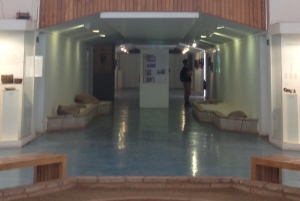Registrar’s Postcard: New Museology in Chile

I could post an image of a mummy. I’ve seen human remains in museums across Peru and Chile, some sitting curled in freezers, others twisted by the pain of their final moments in Perspex cases, or laid on stainless steel trollies like corpses in a morgue.

Until today, when visiting the R.P. Gustavo Le Paige Archeological Museum in San Pedro de Atacama, where the mummies have been removed from the eyes of ‘morbid visitors’ and had ‘their intimacy returned’. In consultation with the Atacameño community, the original arrangement of the collection is being reorganized to bring the bones of ancestors back together and store them in a dedicated facility facing a traditional burial direction.
The exhibition has had to be entirely redesigned. It now focuses on the technological achievements of the Atacameño people as they’ve worked out ways to live and belong in this extreme environment for more than 6,000 years.


This is very interesting to me. If you have any references to the discussion of removal/repatriation of human remains I will appreciate same. When I ask my archaeological colleagues for examples in South or Mesoamerica comparable to NAGPRA-type discussions in the United States I get no response.
Hi Robert – one of the first exhibits at the Gustavo Le Paige museum was a 25 minute film titled “Removal of human remains and bodies from the exposition” (2007) and I thought it was excellent. After enquiring, there’s no DVD nor is it online. No publications about the process in the museum shop either.
Perhaps it’s worth contacting the museum? They appear to have a strong university association, on-site graduate program, administration team, education facilities – surely someone can share some useful references. Sorry I can’t provide more info myself.
As an aside, there’s a strong repatriation movement in Australia, about which there is a lot of literature (although I don’t believe there’s comparative legislation to NAGPRA). Perhaps a useful comparison to discussions in the States.